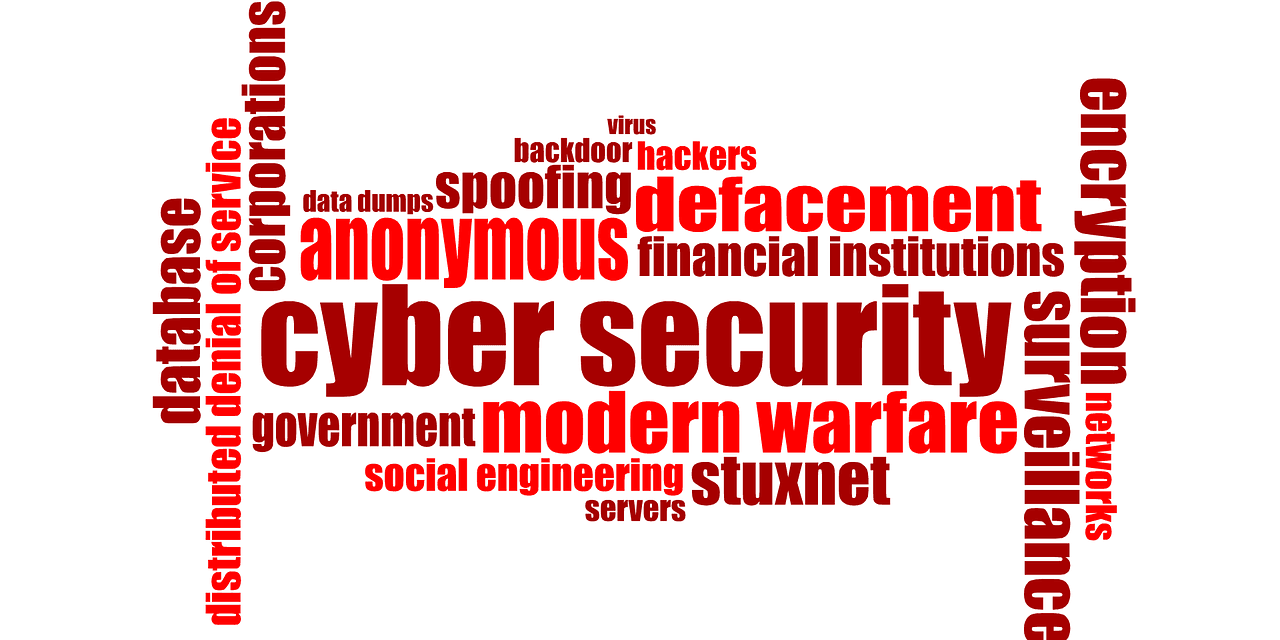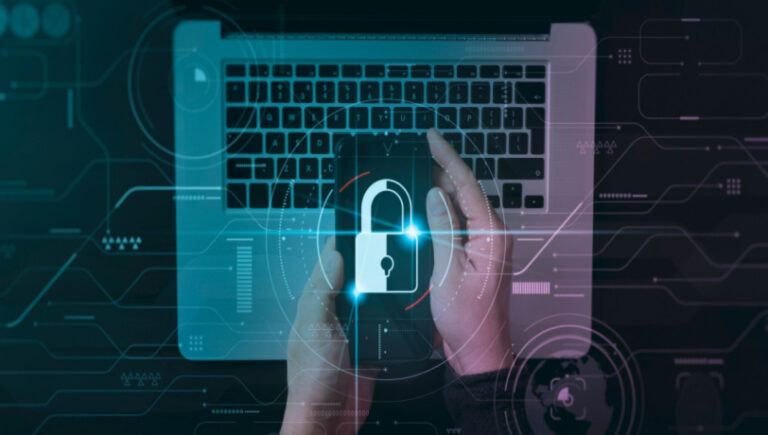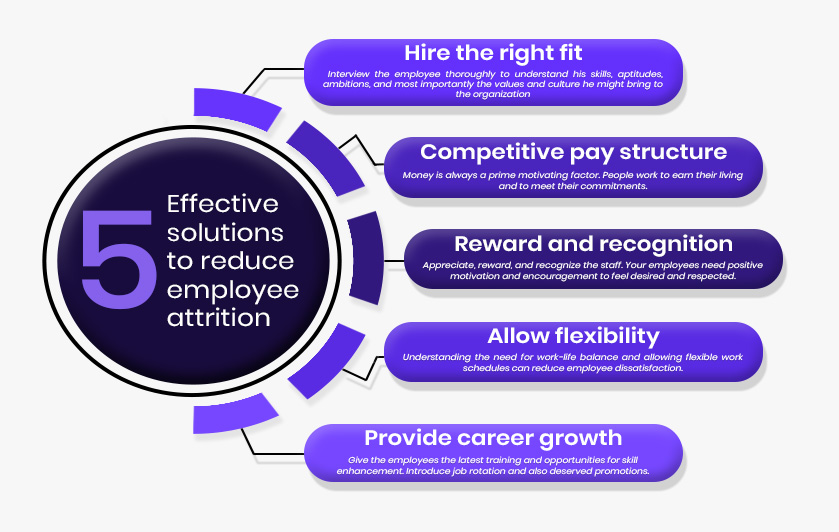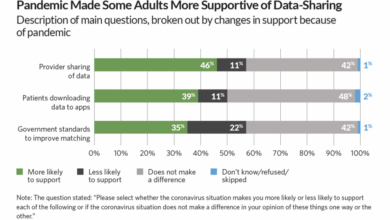
Employees Leaving Jobs Because of Cyber Attacks
Employees leaving jobs because of cyber attacks is a growing concern, impacting businesses and individuals alike. The emotional fallout from a data breach can be devastating, leaving employees feeling vulnerable, betrayed, and deeply anxious about their personal information. This isn’t just about lost data; it’s about shattered trust and the erosion of a company’s reputation. We’ll delve into the reasons why employees are walking away, exploring the psychological impact, the role of company response (or lack thereof), and what steps businesses can take to mitigate this serious problem.
From the immediate aftermath of a cyberattack – the frantic password changes, the credit report monitoring, and the gnawing fear of identity theft – to the long-term effects on morale and productivity, the consequences are far-reaching. We’ll examine the crucial role of cybersecurity training, transparent communication, and the ethical responsibilities companies have to protect their employees’ data. Ultimately, we’ll look at how a strong commitment to cybersecurity can not only protect a company’s assets but also safeguard its most valuable resource: its people.
The Impact of Cyberattacks on Employee Retention

Cyberattacks are no longer a hypothetical threat; they are a harsh reality impacting organizations worldwide. The consequences extend far beyond financial losses and reputational damage; they significantly affect employee morale, loyalty, and ultimately, retention rates. A strong correlation exists between the severity of a cyberattack and the subsequent increase in employee turnover.The direct correlation between significant cyberattacks and employee turnover is undeniable.
Employees who witness or experience a data breach often feel a profound sense of vulnerability and distrust towards their employer. This feeling is amplified when the organization’s response is inadequate or slow, further eroding employee confidence and loyalty. This erosion of trust translates directly into increased resignation rates as employees seek employment with organizations demonstrating a stronger commitment to cybersecurity.
Psychological Impact of Data Breaches on Employees
Data breaches trigger a range of negative psychological effects on employees. The loss of personal information, such as social security numbers, addresses, and financial details, can cause significant anxiety and stress. Employees may worry about identity theft, financial fraud, and the long-term consequences of their data being compromised. This feeling of vulnerability can lead to decreased job satisfaction, increased cynicism, and ultimately, a decision to leave the organization.
The feeling of betrayal – that the employer failed to adequately protect their personal information – is a powerful driver of employee disengagement and departure.
Company Responses and Their Effect on Employee Loyalty
A company’s response to a cyberattack is crucial in mitigating its impact on employee retention. Transparent and proactive communication, coupled with swift remediation efforts, can significantly reduce the negative psychological effects on employees. Offering credit monitoring services, providing counseling resources, and clearly outlining the steps taken to prevent future breaches can demonstrate a commitment to employee well-being and rebuild trust.
Conversely, a lack of communication, delayed responses, or downplaying the severity of the breach can severely damage employee morale and loyalty, leading to high turnover. For example, a company that fails to inform employees of a data breach promptly might face a wave of resignations as employees lose faith in the organization’s ability to protect them.
Case Studies: Cybersecurity and Employee Attrition
Several case studies demonstrate the positive correlation between strong cybersecurity practices and lower employee attrition rates. Companies that invest heavily in cybersecurity training, robust security systems, and incident response planning tend to experience greater employee loyalty and lower turnover. For instance, a major financial institution that implemented a comprehensive cybersecurity program, including regular employee training and multi-factor authentication, reported a significant decrease in employee turnover following a series of minor security incidents.
Their proactive approach and commitment to security instilled confidence in their employees, reducing the anxiety and distrust associated with potential breaches. In contrast, companies with weak cybersecurity measures often face higher turnover rates as employees seek safer and more secure work environments.
Comparison of Employee Retention Rates
| Cybersecurity Measures | Employee Turnover Rate (Annual) | Employee Satisfaction Score (Average) | Investment in Cybersecurity Training (Annual per Employee) |
|---|---|---|---|
| Strong (Proactive, robust systems, regular training) | 5-10% | 4.0-4.5 (out of 5) | $500-$1000 |
| Weak (Reactive, outdated systems, minimal training) | 15-25% | 2.5-3.5 (out of 5) | <$200 |
Employee Concerns Following a Cyberattack: Employees Leaving Jobs Because Of Cyber Attacks

The aftermath of a cyberattack can be incredibly unsettling for employees, extending far beyond the immediate disruption to work. The impact on individual well-being and long-term job satisfaction is significant, influencing retention rates and overall company morale. Understanding these concerns is crucial for organizations to effectively mitigate the damage and support their workforce.
It’s heartbreaking to see skilled employees jump ship after a cyberattack; the fallout is devastating. Building robust, secure systems is crucial, and that’s where learning more about domino app dev, the low-code and pro-code future , becomes incredibly important. Investing in better security practices, often enabled by modern development approaches, can help prevent these situations and retain valuable team members.
Ultimately, a secure workplace is a happy workplace.
Top Three Employee Concerns After a Data Breach
Following a data breach, employees typically grapple with three primary concerns: fear of identity theft, worries about the company’s reputation, and uncertainty about the future of their employment. These anxieties can significantly impact their productivity and overall job satisfaction. The severity of these concerns often depends on the nature and scale of the breach, as well as the company’s response.
For example, a breach involving sensitive personal data like social security numbers will naturally cause far greater anxiety than a breach affecting only less sensitive information.
The Impact of Identity Theft on Employee Morale and Productivity
The fear of identity theft is arguably the most pressing concern for employees after a data breach. The potential consequences – financial losses, damaged credit scores, and the time and effort required to rectify the situation – are substantial and deeply stressful. This fear can lead to decreased productivity as employees spend time worrying about their personal information, monitoring their accounts, and contacting credit bureaus.
Reduced concentration and increased anxiety levels directly impact their work performance, creating a ripple effect across the organization. For instance, an employee constantly checking their credit report instead of working on a project directly impacts deadlines and team productivity.
The Impact of Reputational Damage on Employee Confidence and Job Satisfaction
A company’s reputation is inextricably linked to employee morale and job satisfaction. When a cyberattack leads to negative media coverage or public distrust, employees can feel a sense of shame or embarrassment associated with their employer. This reputational damage can undermine their confidence in the company’s leadership and their own job security. They may start looking for alternative employment opportunities, fearing that the company’s damaged reputation could affect their own career prospects.
A real-world example is the significant drop in employee morale and increased turnover at companies that have experienced high-profile data breaches and subsequent negative media attention.
Specific Actions Employees Might Take After a Cyberattack
Following a cyberattack, proactive steps are crucial for employees to mitigate potential risks. It’s vital for companies to clearly communicate these steps to their workforce.
- Change all passwords, using strong, unique passwords for each account.
- Monitor credit reports regularly for any suspicious activity. This involves checking all three major credit bureaus (Equifax, Experian, and TransUnion).
- Consider placing a fraud alert or security freeze on their credit reports.
- Review bank and credit card statements carefully for unauthorized transactions.
- Report any suspicious activity to the appropriate authorities and the company’s IT department.
Company Communication Strategy and Employee Perception
A company’s communication strategy during and after a cyberattack plays a critical role in shaping employee perception and influencing retention. Transparent and timely communication, providing clear information about the breach, its impact, and the steps being taken to address it, can significantly alleviate employee anxieties. Conversely, a lack of communication or a dismissive attitude can exacerbate fears, erode trust, and lead to increased employee turnover.
For example, companies that proactively communicate with employees, providing regular updates and resources, often experience lower levels of employee anxiety and higher retention rates compared to companies that handle the situation poorly.
Cybersecurity Training and Employee Retention
Cybersecurity training isn’t just a box to tick; it’s a crucial investment in employee well-being and company longevity. In today’s threat landscape, a well-trained workforce is the first line of defense against cyberattacks, directly impacting employee confidence, reducing anxiety, and ultimately, boosting retention rates. A robust training program can transform employees from potential vulnerabilities into active participants in safeguarding company data.The effectiveness of cybersecurity training varies significantly depending on the approach.
Simplistic awareness campaigns often fall short, while immersive, interactive programs yield far better results. The key is to move beyond rote memorization and engage employees in practical exercises that simulate real-world scenarios.
Comparative Effectiveness of Cybersecurity Training Programs
Different training methodologies offer varying degrees of effectiveness. Traditional, lecture-based training often fails to engage learners and results in poor knowledge retention. Conversely, interactive methods like simulations, gamification, and hands-on workshops demonstrably improve understanding and retention. Studies show that employees who participate in interactive training are significantly less likely to fall victim to phishing scams and other social engineering attacks compared to those who receive only passive instruction.
For example, a study by SANS Institute found that organizations using simulation-based training experienced a 70% reduction in successful phishing attacks. The level of anxiety surrounding cybersecurity threats also diminishes with effective training, as employees gain confidence in their ability to identify and respond to potential risks.
Best Practices for Improving Cybersecurity Training Programs
A successful cybersecurity training program requires careful planning and ongoing evaluation. Here are some key best practices:
Effective training programs should incorporate several key elements. First, they need to be tailored to the specific roles and responsibilities of employees. A CEO’s training needs will differ significantly from those of a junior IT technician. Second, the training must be engaging and relevant, avoiding dry lectures and focusing on practical application. Third, regular reinforcement is critical.
Employees should receive refresher training on a regular basis, and new threats and vulnerabilities should be addressed promptly. Finally, the effectiveness of the training program should be continuously monitored and evaluated, with adjustments made as needed.
- Regularly Updated Content: Training materials should reflect the ever-evolving threat landscape, incorporating the latest attack vectors and best practices.
- Interactive Modules: Gamification, simulations, and hands-on exercises significantly improve engagement and knowledge retention.
- Role-Based Training: Tailor training content to the specific responsibilities and security needs of each role within the organization.
- Regular Refreshers: Schedule periodic refresher courses to reinforce learning and address emerging threats.
- Performance Evaluation: Implement assessments and quizzes to measure knowledge retention and identify areas for improvement.
Integrating Cybersecurity Training into Onboarding
Integrating cybersecurity training into the onboarding process is crucial for establishing a security-conscious culture from day one. New hires should receive comprehensive training on company policies, acceptable use guidelines, and the importance of data security. This can be achieved through interactive modules, presentations, and hands-on exercises. For instance, a new employee might participate in a simulated phishing attack exercise to learn how to identify and report suspicious emails.
This early exposure helps establish good security habits and minimizes the risk of human error.
Proactive Cybersecurity Measures and Employee Trust
Regular security audits and vulnerability assessments demonstrate a company’s commitment to security, fostering trust among employees. Transparency about these proactive measures helps employees understand that their security is a priority. For example, a company might publicly share the results of its security audits, highlighting the steps taken to address identified vulnerabilities. This demonstrates a commitment to continuous improvement and builds confidence among employees.
Transparent Communication Regarding Cybersecurity Protocols
Open and honest communication about cybersecurity protocols is paramount. Employees need to understand the “why” behind security policies and procedures. Regular updates on security incidents (without disclosing sensitive information) and explanations of new security measures can alleviate anxiety and build trust. A company newsletter or internal blog could be used to communicate this information effectively, ensuring employees feel informed and empowered.
Compensation and Benefits Related to Cybersecurity Risks

The fallout from a cyberattack extends far beyond the immediate technical challenges; it significantly impacts employee morale and retention. Offering competitive compensation and benefits directly addressing cybersecurity risks is crucial for attracting and retaining top talent in today’s threat landscape. Failing to do so can lead to significant financial losses and reputational damage.Offering additional compensation or benefits demonstrates a company’s commitment to employee well-being and security.
This proactive approach not only mitigates employee concerns but also fosters a culture of trust and loyalty.
Identity Theft Protection and Other Benefits
Companies can offer a range of benefits to alleviate employee anxieties surrounding data breaches. This could include robust identity theft protection services, credit monitoring, and even access to legal and counseling services should employees become victims of identity theft or other cybercrimes resulting from a company data breach. Providing these services shows a tangible commitment to employee well-being beyond simply paying a salary.
For example, a company could partner with a reputable identity theft protection provider to offer comprehensive coverage to all employees, regardless of their role or level of access to sensitive data.
Demonstrating Commitment Through Tangible Actions
Beyond financial compensation, companies can demonstrate their commitment through tangible actions. This includes investing in robust cybersecurity infrastructure, providing comprehensive cybersecurity training, and establishing clear incident response protocols. Regularly communicating these efforts to employees builds confidence and transparency. For example, a company might host an annual cybersecurity awareness day with guest speakers, interactive workshops, and clear communication of the company’s security posture and incident response plan.
Another example would be publicly sharing their security certifications (like ISO 27001) to demonstrate commitment to industry best practices.
Ethical Considerations of Handling Sensitive Data Without Adequate Protection
Requiring employees to handle sensitive data without providing adequate protection is ethically questionable. It exposes employees to unnecessary risks and places an undue burden on them. Companies have a moral and legal obligation to protect employee data and provide the necessary tools and training to minimize risks. This includes providing secure access to sensitive information, implementing strong access controls, and providing regular cybersecurity training.
Failing to do so could lead to legal repercussions and significant reputational damage. A company that fails to provide adequate protection and an employee suffers identity theft as a result could face lawsuits and substantial financial penalties.
Hypothetical Scenario: High Employee Turnover Costs
Let’s imagine a mid-sized tech company, “InnovateTech,” experiences a significant data breach. Following the breach, 20% of their 500 employees – 100 individuals – resign due to concerns about their personal data security and lack of adequate support from the company. The average cost of recruiting and training a replacement employee is $15,000. The total cost of employee turnover for InnovateTech, therefore, would be $1,500,000.
This doesn’t account for the loss of productivity, intellectual property, and potential damage to InnovateTech’s reputation.
It’s heartbreaking to see talented employees jump ship because of a company’s cybersecurity failings – a cyberattack can shatter trust and morale. To prevent this, proactive measures are crucial, and that’s where understanding solutions like bitglass and the rise of cloud security posture management becomes essential. Investing in robust cloud security isn’t just a cost; it’s an investment in retaining your best people and protecting your company’s future from the devastating impact of breaches.
Visual Representation: Cybersecurity Investment vs. Employee Retention Costs
The visual would be a line graph. The X-axis represents the level of investment in cybersecurity (low to high). The Y-axis represents the cost of employee retention (high to low). The graph would show a downward-sloping line. As investment in cybersecurity increases (moving along the X-axis), the cost of employee retention decreases (moving down the Y-axis).
This visually demonstrates the inverse relationship between cybersecurity investment and the cost associated with employee turnover due to cybersecurity incidents. A clear label would highlight the decreasing costs associated with higher cybersecurity investments, illustrating the return on investment in employee retention.
Legal and Regulatory Compliance in Relation to Employee Data Breaches
Data breaches impacting employee data carry significant legal and regulatory consequences for companies. Failure to comply with relevant laws can result in hefty fines, lawsuits, and reputational damage, severely impacting employee trust and retention. Understanding and adhering to these regulations is paramount for responsible data handling.
Key Legal and Regulatory Requirements Following a Data Breach
Companies must meet various legal and regulatory requirements after a data breach affecting employee data. These requirements vary depending on the jurisdiction and the nature of the data involved. Generally, they include prompt notification of affected employees, law enforcement, and potentially regulatory bodies. This often involves conducting a thorough investigation to determine the extent of the breach, the affected individuals, and the steps taken to mitigate further harm.
Companies must also implement measures to prevent future breaches and demonstrate a commitment to data security improvements. For example, the GDPR in Europe mandates specific notification timelines and processes, while the CCPA in California focuses on consumer data but has implications for employee data as well.
Compliance and Employee Perception of Company Commitment to Security
Compliance with data protection regulations significantly influences how employees perceive their employer’s commitment to their security and well-being. Demonstrating a proactive approach to data protection, including transparent communication about breaches and the steps taken to address them, fosters trust and loyalty. Conversely, a lack of transparency or a delayed response to a breach can erode employee confidence and lead to negative perceptions of the company’s security posture.
This can impact employee morale, productivity, and retention. A strong security culture, built on compliance and open communication, is crucial for maintaining a positive employee experience.
Potential Legal Ramifications for Inadequate Data Protection, Employees leaving jobs because of cyber attacks
Companies that fail to adequately protect employee data face a range of legal ramifications. These can include significant financial penalties, imposed by regulatory bodies like the FTC in the US or the ICO in the UK. Furthermore, affected employees may file class-action lawsuits seeking compensation for damages, including emotional distress, identity theft, and financial losses. Reputational damage can also lead to decreased investor confidence, difficulty attracting and retaining talent, and loss of business opportunities.
The severity of the consequences depends on factors such as the size and nature of the breach, the company’s response, and the applicable laws.
Legal Obligations in Different Jurisdictions
Data breach notification laws and regulations vary considerably across jurisdictions. The EU’s GDPR, for instance, imposes stricter requirements than some US state laws. GDPR mandates notification within 72 hours of becoming aware of a breach, while US state laws have varying timelines and thresholds for notification. Some jurisdictions have specific requirements regarding the type of information that must be disclosed to affected individuals.
Understanding these differences is critical for multinational companies, requiring them to implement robust compliance programs that adapt to the specific legal frameworks in each region where they operate. Failure to comply with the relevant laws in each jurisdiction can lead to a multitude of legal actions.
Effective Communication Strategies for Informing Employees
Effective communication is crucial after a data breach. Companies should develop a clear and concise communication plan that Artikels the steps taken to address the breach, the information affected, and the support available to employees. This plan should include providing clear and accessible information about employees’ rights and responsibilities, including steps they can take to protect themselves from potential harm.
Using multiple communication channels, such as email, intranet postings, and potentially even phone calls, ensures that all employees receive the necessary information. Regular updates throughout the investigation and remediation process help maintain transparency and build trust. Providing resources like credit monitoring services demonstrates a commitment to employee well-being and mitigates potential financial harm.
Epilogue
In the end, the issue of employees leaving jobs due to cyberattacks boils down to trust. A company’s commitment to robust cybersecurity isn’t just about compliance; it’s about demonstrating to employees that their well-being is a priority. By investing in comprehensive training, transparent communication, and proactive security measures, businesses can foster a culture of trust and significantly reduce employee turnover resulting from these increasingly prevalent incidents.
Protecting employee data is not just a legal obligation, it’s a fundamental aspect of ethical business practice and essential for maintaining a loyal and productive workforce.
Clarifying Questions
What legal recourse do employees have if their data is compromised due to a company cyberattack?
This varies by jurisdiction and the specifics of the breach. Employees may have grounds to sue for negligence or breach of contract, depending on local laws and the company’s policies. They should consult with an attorney to understand their rights.
How can companies improve their communication strategies after a cyberattack to retain employees?
Honest, timely, and transparent communication is key. Companies should clearly explain what happened, what data was compromised, what steps are being taken to address the situation, and what support is available to employees. Open communication builds trust and reduces anxiety.
What are some common signs that employees are considering leaving due to cybersecurity concerns?
Reduced productivity, decreased engagement, increased absenteeism, and informal discussions expressing anxiety or distrust are potential indicators. Regular employee surveys and feedback sessions can help identify these concerns early.





